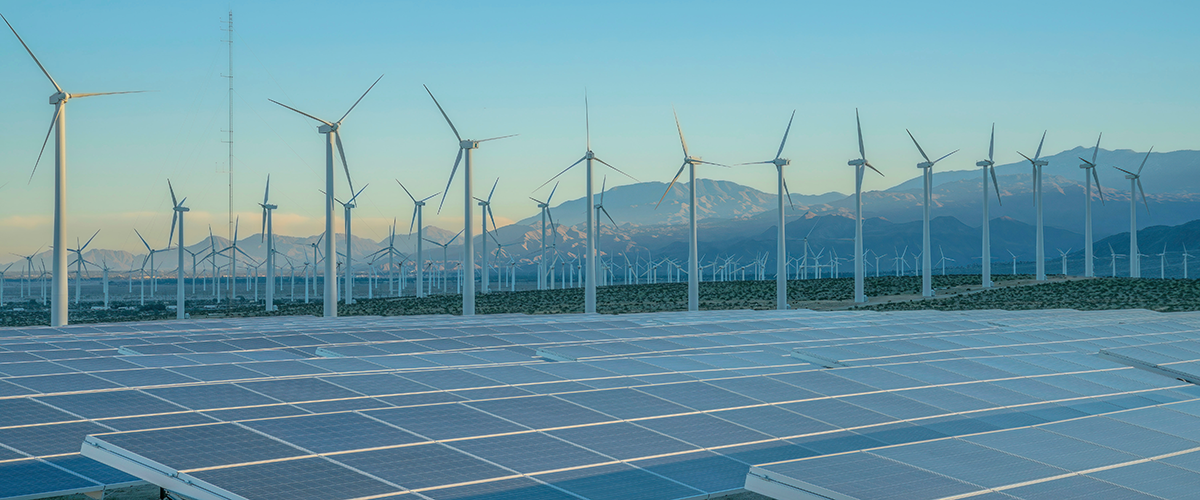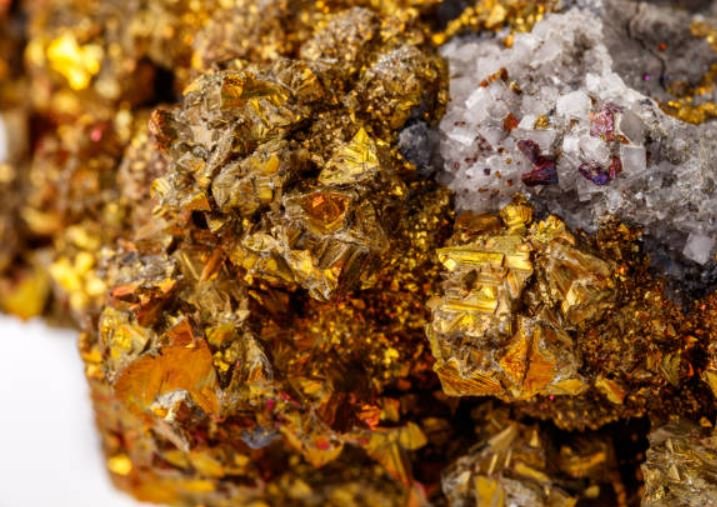Botswana, a landlocked country in Southern Africa, is rich in natural resources. Diamonds are the backbone of its economy, making up about 40% of its GDP and 85% of export earnings.
Jwaneng and Orapa, two of the world’s largest diamond mines, are in Botswana. The country also has copper and nickel deposits, mainly mined in Selebi-Phikwe.
Its vast coal reserves in Morupule help meet local energy needs. Sua Pan produces soda ash and salt for regional export.
Between 1995 and 2018, Botswana’s natural capital grew by 13%. However, mineral rents have fallen due to global market changes. The country has great potential for renewable energy, especially solar power, due to its high solar irradiation levels.
READ ALSO: Angola’s Natural Resources: Locations, Discoveries, Export Potential, And Economic Impact
Botswana’s Natural Resources And Their Locations
Here’s a list of natural resources that you can find in Botswana and locations where you can find them:
| Natural Resources | Locations |
|---|---|
| Diamonds | Orapa, Jwaneng, Letlhakane, Damtshaa (southeastern sandveld, near Makgadikgadi Pans). |
| Copper | Selebi-Phikwe, Phoenix Mine (near the Motloutse River). |
| Nickel | Selebi-Phikwe, Phoenix Mine (near the Motloutse River). |
| Coal | Morupule (near Palapye). |
| Soda Ash | Sua Pan (eastern Makgadikgadi Pans). |
| Salt | Sua Pan (eastern Makgadikgadi Pans). |
| Potash | Sua Pan (eastern Makgadikgadi Pans). |
| Iron Ore | Shoshong Hills (central Botswana). |
| Silver | Found in association with copper and nickel deposits. |
| Gold | Tati Goldfield (northeastern Botswana). |
| Arable Land | Eastern Botswana (used for crops like millet, maize, and sorghum). |
| Livestock | Countrywide, particularly in rural areas |
Botswana’s Natural Resource Discoveries
Botswana’s resource discoveries have turned the country from an agrarian economy into one of Africa’s wealthiest nations. In 1967, diamonds were discovered in Orapa.
The Orapa mine, established in 1972, became the world’s largest diamond producer by volume. Then, in 1972, Jwaneng was discovered. By 1982, Jwaneng was operational and became the richest diamond mine globally by value.
By 1999, Botswana was responsible for 25% of global diamond production, with over 30 million carats produced annually. In the 1970s, copper and nickel deposits were found near Selebi-Phikwe.
This led to the creation of BCL Mine, a joint venture between the government and private companies. BCL became one of Botswana’s biggest private-sector employers, with an estimated 95 million tonnes of reserves.
This mine helped diversify Botswana’s mineral exports. In 1991, the Sua Pan soda ash plant began production in northeastern Botswana. This plant produces soda ash and salt, with an annual capacity of 650,000 tons of salt.
The products are used for industrial purposes in the region. In the 2000s, coal reserves were tapped at Morupule Colliery, near Palapye. The mine meets domestic energy needs and has export potential.
With over 200 billion tonnes of reserves, coal offers further energy diversification for Botswana. In 2024, Botswana made headlines with the discovery of a 2,492-carat diamond, the third-largest ever found.
Other notable discoveries include gold found in Tati Goldfields, potash extracted with soda ash at Sua Pan, and silver discovered with copper and nickel deposits.
Viability Of Botswana’s Natural Resource Exploitation
Botswana’s governance is considered one of the best in Africa when it comes to natural resources. The Mines and Minerals Act of 1999 provides a stable legal framework for mining, ensuring transparency and consistency.
The government has also streamlined licensing through an online cadastre portal to make it easier for investors to get involved. Global partnerships, like the one with De Beers, have ensured fair revenue sharing and long-term stability.
Regulatory bodies such as the Ministry of Mineral Resources and the Botswana Geoscience Institute provide compliance with international standards and oversee operations effectively.
When it comes to environmental sustainability, Botswana has worked hard to balance resource use with protecting the environment.
Mining regulations require Environmental Impact Assessments (EIAs) to provide minimal harm to ecosystems. For instance, coal mining at Morupule follows strict environmental guidelines to prevent land degradation.
Still, challenges like water scarcity remain due to the country’s dry climate. Efforts like the National Water Policy aim to address these issues by promoting sustainable water use in mining operations.
Botswana’s partnerships with international experts have been instrumental in resource management. The government works with independent diamond valuers and renowned law firms, like Slaughter and May, during mining negotiations.
For over 50 years, Botswana has avoided major legal disputes, which is a sign of its stability and reliability to global investors. However, Botswana still faces some challenges in its resource exploitation.
Water scarcity is one major issue, as mining operations need large amounts of water, but the country’s dry climate makes it scarce.
Another challenge is high infrastructure costs, especially since Botswana is landlocked, which increases the cost of exporting minerals.
Export Potential Of Botswana’s Natural Resources
| Resources | Percentage of Total Exports | Major Export Market |
|---|---|---|
| Diamonds | 60% | UK (56%), South Africa, Israel, Belgium |
| Copper & Nickel | 10% | China, India |
| Soda Ash & Salt | 5% | Regional markets |
| Beef | 5% | EU |
| Textiles & Crafts | 2% | Regional and niche markets |
Diamonds make up over 80% of Botswana’s export revenue. The country, through Debswana (a partnership with De Beers), produces 20–22 million carats annually.
In 2024, Botswana exported diamonds worth more than $2 billion, making it the 18th-largest resource exporter globally.
Other key exports include copper and nickel from Selebi-Phikwe, soda ash and salt from Sua Pan, and high-quality beef to the European Union under duty-free agreements. Botswana has established strong global trade relationships.
The European Union is a notable market for diamonds and beef due to agreements like the SADC-EU Economic Partnership Agreement.
The United States imports Botswana’s diamonds, while China and India are major buyers of copper, nickel, and diamonds.
The Southern African Customs Union facilitates regional trade, and agreements like the UK-SACUM EPA ensure preferential access to the UK market.
Despite its success, Botswana relies on diamonds, which are mostly exported in rough form, limiting value addition. Being landlocked increases transportation costs to distant markets. Global market fluctuations also affect the mining sector.
However, there are opportunities to expand Botswana’s export potential. Adding value to diamonds by cutting and polishing locally could boost export value and create jobs.
Botswana could also develop solar energy for regional export and expand exports of indigenous products like arts, crafts, and textiles.
Additionally, processed copper and nickel, important for green technologies, could tap into the growing demand from environmentally conscious industries.
Economic Impact Of Botswana’s Natural Resources
Botswana’s natural resources have been key to its economic progress. Mining, particularly diamonds, contributes around 40% of the country’s GDP.
Since the discovery of diamonds in the 1960s, the economy has grown at an average rate of 7.8%, lifting Botswana from one of the poorest nations to an upper-middle-income status.
Diamond revenues have funded essential infrastructure like roads, schools, and hospitals. For instance, universal healthcare and free primary education are largely supported by diamond wealth.
Investments in water systems and transportation have improved access throughout the country. By 2017, Botswana’s per capita GDP had risen to $18,146, an increase from just $70 at independence in 1966.
Export Revenue And Foreign Exchange
As we’ve said, Diamonds make up about 85% of Botswana’s export revenue, bringing in billions each year. In 2014, rough diamond exports were valued at $7 billion.
Other resources, including copper, nickel, soda ash, and beef, also contribute to foreign exchange earnings. This export-driven model has helped the country build significant foreign reserves and maintain fiscal stability.
Employment And Social Development
Mining directly employs only around 4% of Botswana’s workforce, which is roughly 24,000 people. However, the revenues generated support job creation in sectors like construction and services.
The government has used its resource wealth to fund social programs to reduce poverty and inequality. That said, unemployment is still high at 27.6%. The economy’s heavy reliance on diamonds makes it vulnerable to global market changes.
Additionally, weak linkages between mining and other sectors, like agriculture and manufacturing, slow down broader economic growth.

